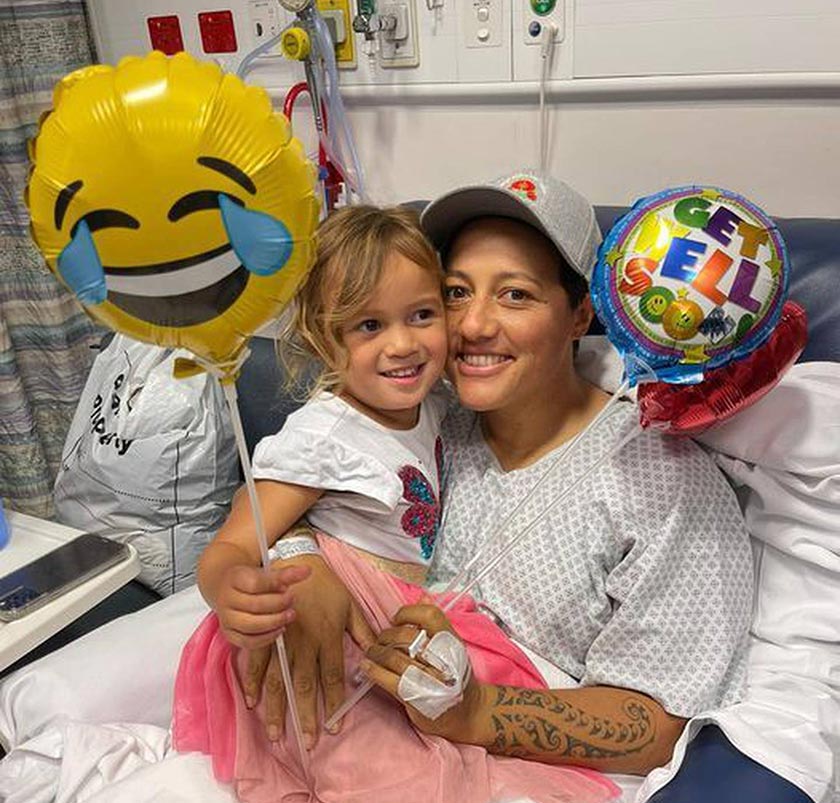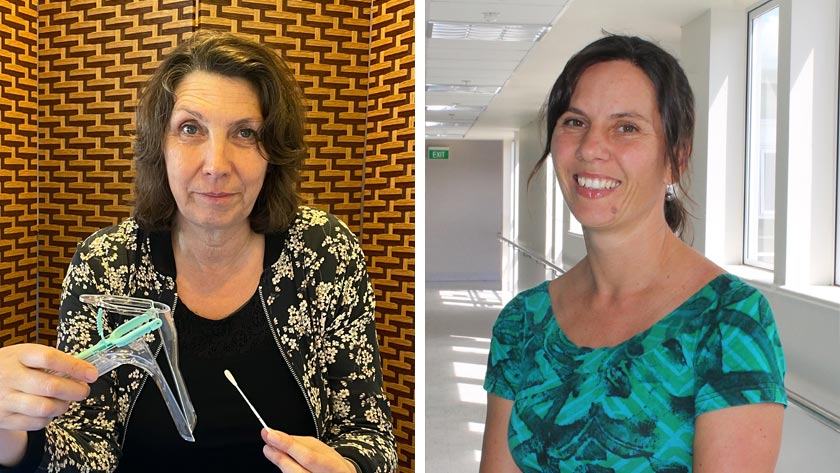After a five-year battle for women to be able to test themselves for signs of cervical cancer, a group of wāhine toa are celebrating a new screening programme planned for 2023.
“This is about women having autonomy over their bodies – de-medicalising our bodies, from a procedure which requires us to get up on a bed and have a very invasive experience,” Waitemata District Health Board (WDHB) cervical screening nurse specialist Jane Grant told Kai Tiaki Nursing New Zealand.
Associate Health Minister Ayesha Verrall announced in May $53 million in funding to develop a new test for human papillomavirus (HPV), which causes 99 per cent of cervical cancer. The new HPV test will allow women to perform a simple vaginal swab themselves with a cotton bud-like tester instead of facing the dreaded speculum – and is much more accurate, at 99.8 per cent versus 90 per cent, Grant said. Because of this, an HPV test would only be needed every five years, rather than the current three.
But there is frustration, too – the self-test could have been piloted here five years ago, says Grant. Nobody has studied how many cancers may have been prevented in that time – “that would have been a useful piece of work!” But HPV primary screening provides 60 to 70 per cent more protection against invasive cervical cancer when compared with cytology screening – a smear – she says.
Self-testing would particularly benefit Māori, Pacific and Asian women, as well as those living in high deprivation – all groups with low screening rates, Grant said. Ministry of Health (MoH) statistics show more than twice as many wāhine Māori are diagnosed, and close to three times as many die, from cervical cancer as non-Māori.1
Research she had been involved with suggested cervical smears were often viewed as a violation of a sacred space, Grant said. Previous sexual trauma, negative smear experiences, lack of awareness and being whakamā – shy – were also reported as barriers by women in New Zealand.2, 3
One Pacific woman in her 60s said her first smear felt like being “slaughtered” and hadn’t returned since her early 20s. A Fijian woman in her late 40s had never had a test due to early sexual trauma.2, 3 Other women said bad smear experiences had put them off for years, even decades.
‘It doesn’t matter how much we try to make it good, we are still asking women to take off their pants and get up on that bed and invade something sacred.’
“It doesn’t matter how much we try to make it good, we are still asking women to take off their pants and get up on that bed and invade something sacred,” Grant said.
Grant herself is overdue for screening, after a “painful and degrading” experience last time, and says she is very much looking forward to the option of self-testing. New Zealand’s current screening programme she says is “a beast” dating back to the 1990s.
Delays
With the benefits of HPV testing emerging internationally, in 2016 then-Health Minister Jonathan Coleman announced plans to introduce it here. However, at the time, the accuracy of a self-test compared to a clinician-led exam had not yet been established, Grant said.
Keen not to delay a new and potentially life-saving approach to cervical screening, Grant and colleagues at Waitemata and Auckland DHBs, along with Victoria University’s Te Tātai Hauora o Hine (Centre for Women’s Health Research) began researching whether self-testing would encourage more engagement from reluctant communities in New Zealand.
The results were decisive. Recent studies in New Zealand have been universally positive on the response to self-testing across a range of communities – a recent one in Northland showing 51 per cent of women who had rarely or never been screened would self-test and that Māori were three times as likely to self-test.4
Yet introducing self-testing had not been prioritised until now – and should never have taken this long, said Grant. “We’ve been promised this HPV testing programme since 2016 with the National Government, but it never came… it was never seen as a priority.”
Conversations with successive health ministers went nowhere until it was raised with Verrall in May.
“What’s heart-breaking is it wasn’t until [Labour MP] Kiritapu [Allan] was diagnosed [in April] that they put any action on it.”

Waitemata DHB colposcopist and women’s health nurse practitioner Georgina McPherson agrees, saying she felt “aggrieved” when ministers recently claimed credit for the move. “There is a whole group of people involved who are passionate about this – the Government has been the handbrake.”
Passionate network
Grant and McPherson are part of an extensive local and international network of around 80 health professionals, Māori health advocates, whānau and researchers drawn together by Tātai Hauora o Hine director Professor Bev Lawton (Ngāti Porou). Its members have given countless free hours over the years, researching and campaigning for self-testing, says Grant.
“We are a group of similar-minded women, I guess – we are maybe a little bit naughty and subversive, where other DHBs are inclined to pull the party line a bit more.”
McPherson credited many “amazing women” for getting the initiative across the line. “We do the work for free, because we are passionate about it… We come from different places but we are passionate about the best way forward on how to improve care for women, especially Māori, Pacific and Asian women.”
McPherson herself is something of a trailblazer. Trained by Dr Ron Jones, a whistleblower on the experiments carried out on women at National Women’s Hospital without their consent, McPherson was the first Pacific NP in New Zealand and the first colposcopist with a nursing background. She has researched how Pacific women navigate colposcopies (cervical examination) and now leads the colposcopy team at Waitemata DHB.
“I just want to make this the best experience for someone, even though it’s not a very nice experience to go through.”
That includes offering Māori, Pacific and Asian women a female colposcopist when they book appointments and allowing time to discuss people’s fears and experiments.
“I will tell them ‘if you need me to stop, please tell me – it’s your space, not mine’. When people feel like they have some control over what is going on, it helps.”
‘I think showing humility and caring goes a long way with people, and they’re more likely to open up to you.’
She said her Cook Island heritage heavily influences her approach. “I very much identify as a New Zealand-born Cook Islander. I care for people by being kind, compassionate, empathetic, gentle with people – this is my cultural background,” McPherson says. “I consider how I would feel if I was in this person’s shoes. I think showing humility and caring goes a long way with people, and they’re more likely to open up to you.”
Self-testing, she says, is “giving women power back”.
Grant expects HPV-testing will make cervical screening far more equitable, but also hopes to see a wider shift.
“My second agenda is empowering all women to have options and autonomy over their bodies,” says Grant. “It’s so powerful and so exciting to be part of something that enables people to hold their health in their own hands.”
Ideally, women will be able to choose what they want, says Grant, “either a speculum exam by a clinician that collects cervical cells and test for HPV… or a self-test that does not include cervical cells so if HPV is detected a follow-up smear or colposcopy would be required…”
For nurses, she believes this is also an opportunity to bring more women’s health specialty roles into primary care – pipelle biopsies or IUDs for example – making health care for women more accessible and equitable.
Grant emphasises, too, the need for fully funded culturally and clinically safe follow-up services for women, when HPV is detected through a self-test.
“Finding a provider where you feel safe and respected is important and this will be more important than ever in future when providers are screening less frequently.”
See HPV self-test factbox in “Cervical self-testing a long time coming”.
References
- Ministry of Health Tatu Kahukura. (2018, August 02). Ngā mana hauora tūtohu: Health status indicators: Cancer.
- Adcock, A., Cram, F., Lawton, B., Geller, S., Hibma, M., Sykes, P., MacDonald, E. J., Dallas-Katoa, W., Rendle, B., Cornell, T., Mataki, T., Rangiwhetu, T., Gifkins, N., & Hart, S. (2019). Acceptability of self-taken vaginal HPV sample for cervical screening among an under-screened Indigenous population. The Australian & New Zealand Journal of Obstetrics & Gynaecology, 59(2), 301–307. doi.org/10.1111/ajo.12933
- Brewer, N., Bartholomew, K., Grant, J., Maxwell, A., McPherson, G., Wihongi, H., Bromhead, C., Scott, N., Crengle, S., Foliaki, S., & Cunningham C. (2021, April 15). Acceptability of human papillomavirus (HPV) self-sampling among never-and under-screened Indigenous and other minority women: a randomised three-arm community trial in Aotearoa New Zealand. medRxiv.
- MacDonald, E., Geller, S., Sibanda, N., Stevenson, K., Denmead, L., Adcock, A., Cram, F., Hibma, M., Sykes, P., & Lawton, B. (2021). Reaching under-screened/never-screened indigenous peoples with HPV self-testing: A community-based cluster randomised controlled trial. The Australian and New Zealand Journal of Obstetrics & Gynaecology, 61(1), 135-41.




